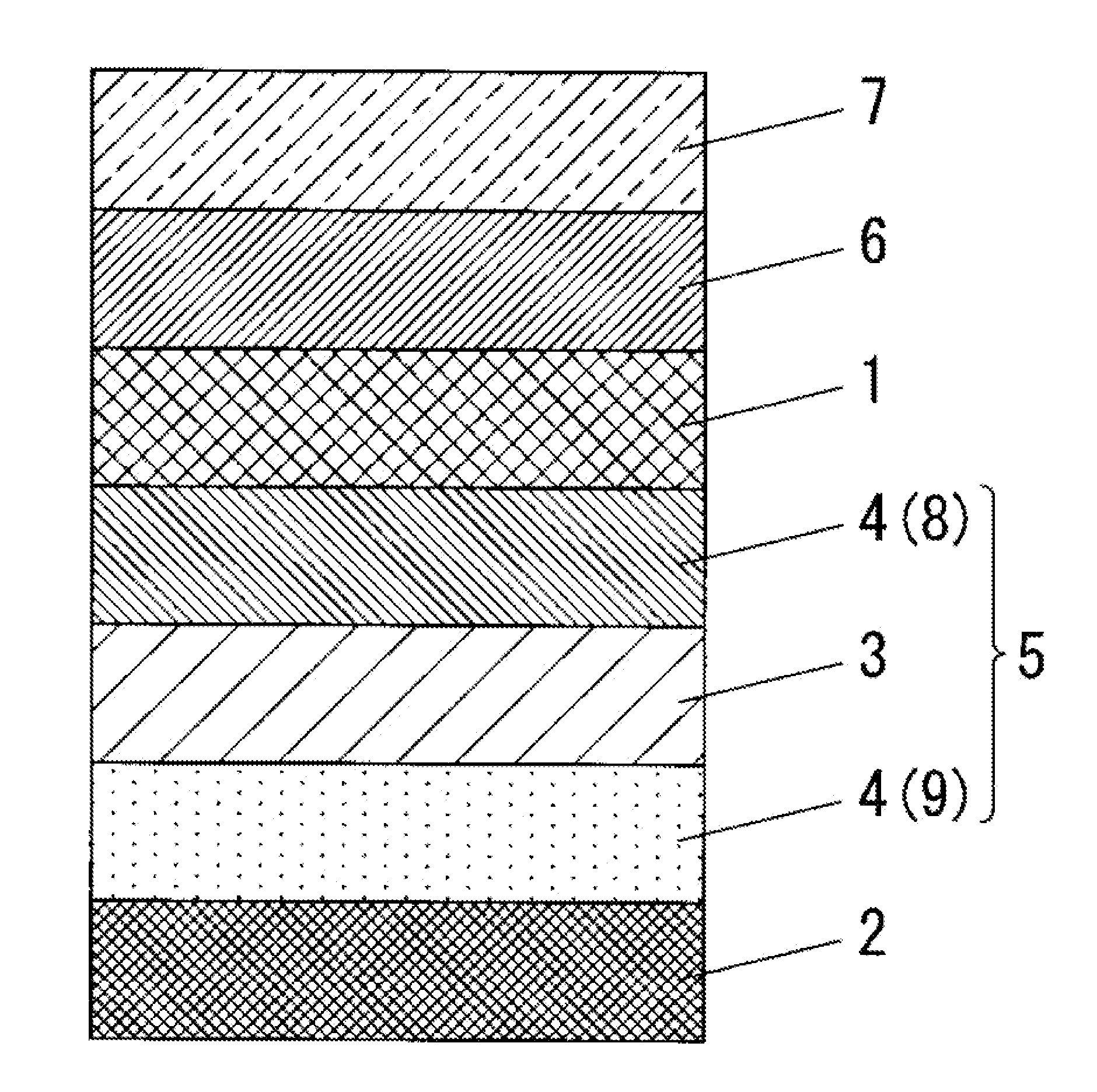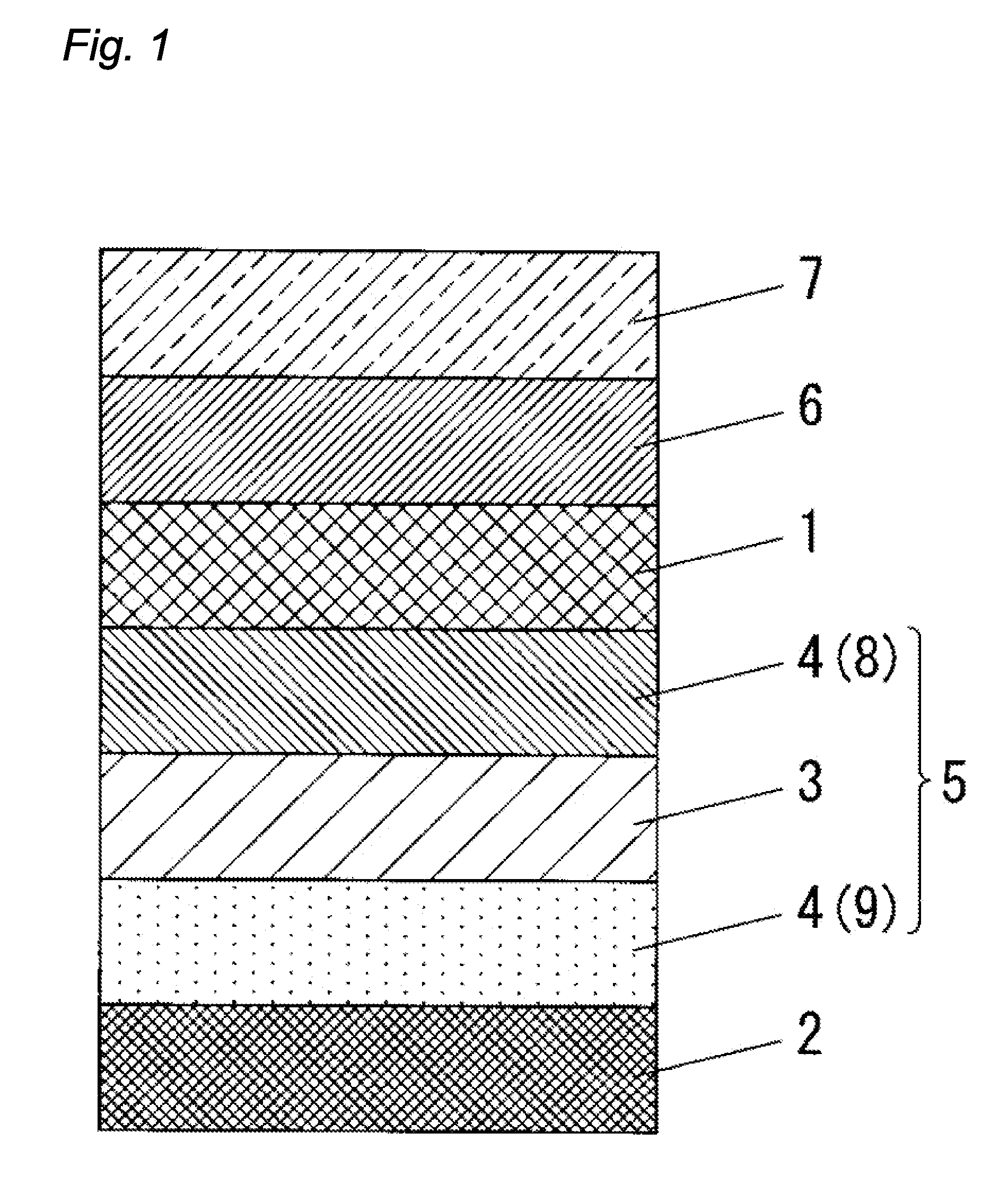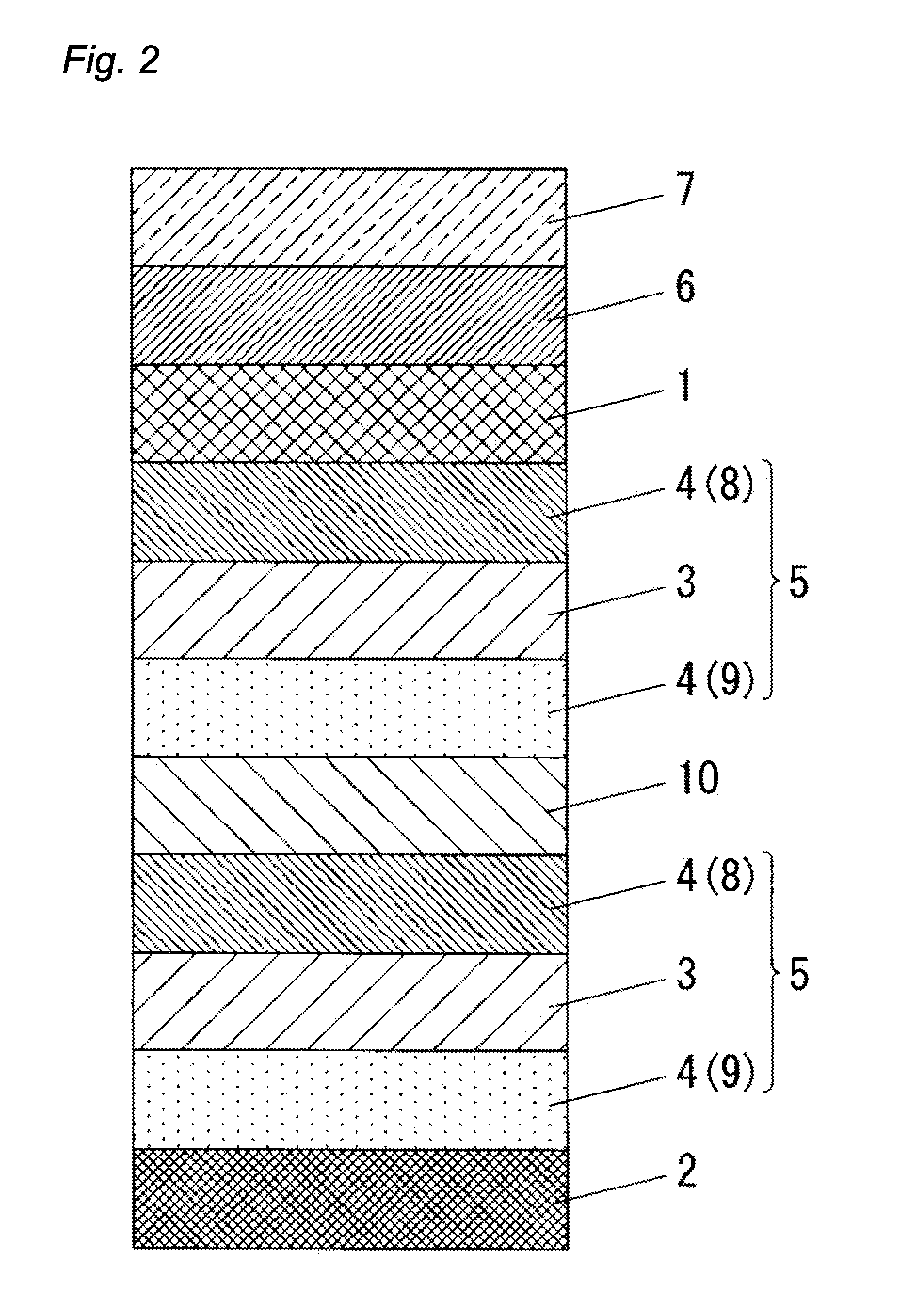Organic electroluminescence device
- Summary
- Abstract
- Description
- Claims
- Application Information
AI Technical Summary
Benefits of technology
Problems solved by technology
Method used
Image
Examples
example 1
[0058]In the organic electroluminescence device, the glass substrate 6 having a thickness of 0.7 mm was prepared. The glass substrate 6 was provided with ITO film. The ITO film had a thickness of 150 nm and had a sheet resistance of 10 ohm per square. The ITO film had a thickness of 150 nm, and had a sheet resistance of 10 ohm per square. The substrate 6 was etched and cut in order to form the glass substrate 6 with the ITO film having a size shown in FIG. 3. Consequently, the ITO film was formed as the anode which acts as the light transmissive electrode 1. The glass substrate 6 with the ITO was cleaned by ultrasonic cleaning with pure water, acetone, and isopropyl alcohol. Subsequently, the glass substrate 6 with the ITO was cleaned by vapor cleaning with vapor of the isopropyl alcohol. Subsequently, the glass substrate 6 with the ITO was cleaned by UV ozone cleaning for 10 minutes.
[0059]Subsequently, the glass substrate 6 with the ITO was placed within a vacuum deposition equipme...
example 2
[0060]The organic electroluminescence device was obtained in the same manner as in example 1 except that the electron transport layer 9 had a thickness of 350 nm.
example 3
[0061]The organic electroluminescence device was obtained in the same manner as in example 1 except that the electron transport layer 9 had a thickness of 400 nm.
PUM
 Login to View More
Login to View More Abstract
Description
Claims
Application Information
 Login to View More
Login to View More - R&D
- Intellectual Property
- Life Sciences
- Materials
- Tech Scout
- Unparalleled Data Quality
- Higher Quality Content
- 60% Fewer Hallucinations
Browse by: Latest US Patents, China's latest patents, Technical Efficacy Thesaurus, Application Domain, Technology Topic, Popular Technical Reports.
© 2025 PatSnap. All rights reserved.Legal|Privacy policy|Modern Slavery Act Transparency Statement|Sitemap|About US| Contact US: help@patsnap.com



